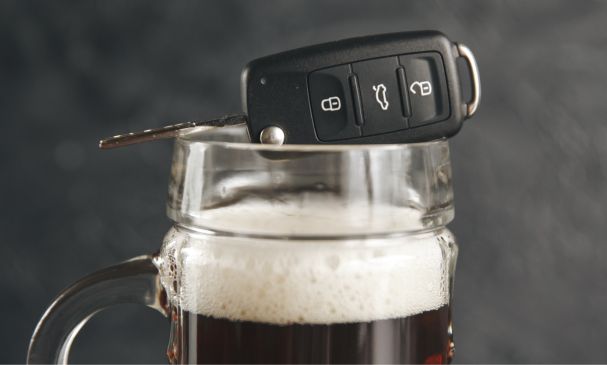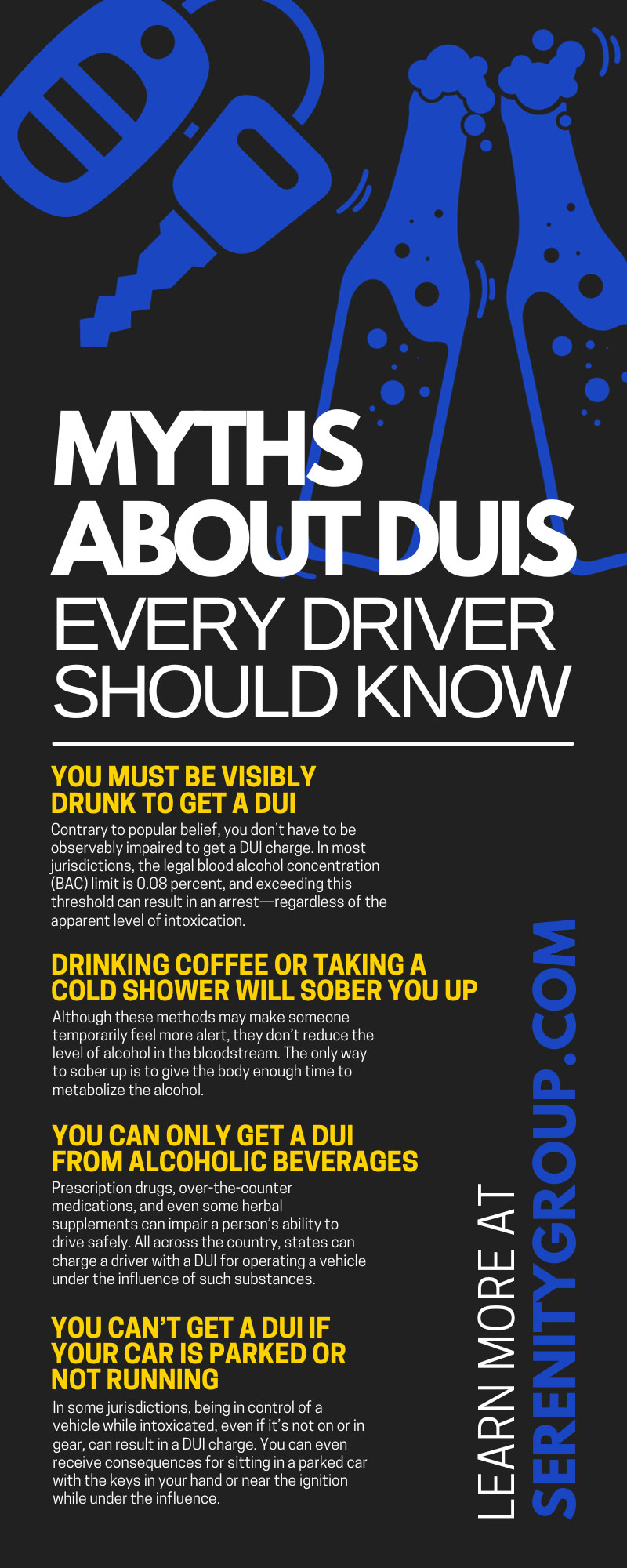15 Myths About DUIs Every Driver Should Know

Driving under the influence, or DUI, remains a persistent issue worldwide. It poses significant risks to public safety and can lead to severe legal consequences, such as revocation of driving privileges or even imprisonment. Something contributing to the continued prevalence of DUIs may be the many myths and misconceptions circulating about driving after consuming alcohol.
Here, we’ll debunk 15 common myths about DUIs that every driver should know to help improve safety on the road. Dispelling these myths can help drivers make informed decisions and foster a more responsible drinking culture.
Myth 1: You Must Be Visibly Drunk To Get a DUI
Contrary to popular belief, you don’t have to be observably impaired to get a DUI charge. In most jurisdictions, the legal blood alcohol concentration (BAC) limit is 0.08 percent, and exceeding this threshold can result in an arrest—regardless of the apparent level of intoxication.
Myth 2: Drinking Coffee or Taking a Cold Shower Will Sober You Up
Although these methods may make someone temporarily feel more alert, they don’t reduce the level of alcohol in the bloodstream. The only way to sober up is to give the body enough time to metabolize the alcohol.
Myth 3: You Can Only Get a DUI From Alcoholic Beverages
Prescription drugs, over-the-counter medications, and even some herbal supplements can impair a person’s ability to drive safely. All across the country, states can charge a driver with a DUI for operating a vehicle under the influence of such substances.
Myth 4: You Can’t Get a DUI if Your Car Is Parked or Not Running
In some jurisdictions, being in control of a vehicle while intoxicated, even if it’s not on or in gear, can result in a DUI charge. You can even receive consequences for sitting in a parked car with the keys in your hand or near the ignition while under the influence.
Myth 5: There’s No Difference Between DUI and DWI
Some states differentiate between driving under the influence (DUI) and driving while intoxicated (DWI). While both terms usually indicate impaired driving, the specific thresholds and legal implications may differ from state to state. In some cases, DWI might indicate a higher level of impairment than DUI. Still, the exact definitions, penalties, and standards of proof vary greatly, making it crucial to consult local laws or a legal professional for more accurate information.
Myth 6: Breathalyzers Are Always Accurate
Breathalyzer tests can sometimes generate false positive readings due to equipment malfunctions, improper use, or residual alcohol in the mouth. Drivers can request a blood test after failing a breathalyzer, as it’s a more accurate measure of BAC.
Myth 7: You Can Fool a Breathalyzer by Chewing Gum or Using Breath Fresheners
While these tactics may temporarily mask the smell of alcohol, they have no impact on the breathalyzer test’s accuracy. The device measures the alcohol content in deep lung air, which is unaffected by these short-term solutions. Therefore, attempting to use such methods to deceive a breathalyzer test is ultimately futile and can lead to serious legal repercussions.
Myth 8: They’ll Drop the DUI Charges if the Officer Didn’t Read Your Rights
Miranda rights protect a person’s right to remain silent and consult an attorney during questioning. However, they don’t automatically invalidate DUI charges if not read during the arrest. Only statements made during custodial interrogation without awareness of these rights could be inadmissible in court.
Myth 9: You Can’t Get a DUI on Private Property
Laws regarding DUIs on private property vary by state, but in many cases, a person can still receive a DUI charge for driving under the influence on their property. This fact is especially true if the property is accessible to the public, such as a driveway leading to a public road.
Myth 10: Refusing a Breathalyzer Will Get You out of a DUI
Refusing a breathalyzer can result in additional charges and consequences, such as license suspension or fines. In some states, refusing a breath test may be evidence of guilt and lead to harsher penalties. Moreover, under “implied consent” laws in many jurisdictions, drivers agree to submit to a chemical test for alcohol or drugs simply by driving on public roads.
Myth 11: You Can Refuse a Field Sobriety Test
Field sobriety tests, such as walking in a straight line or standing on one leg, can establish probable cause for a DUI arrest. Refusal to take these tests may result in an automatic arrest and could be evidence of guilt in court.
Myth 12: A DUI Will Automatically Lead to Jail Time
While it’s true that serious DUI offenses can lead to prison sentences, jail time isn’t a guarantee for all cases. The decision often depends on the case’s specifics, such as the driver’s history of DUI offenses and the severity of the incident. First-time offenders will face punishment if the state convicts. However, repeat offenses and incidents where DUI leads to injury or death are more likely to result in significant jail time.
Myth 13: You Only Need SR-22 Insurance if You’ve Been Convicted of a DUI
SR-22 insurance, often referred to as “high-risk” insurance, is for more than those convicted of DUI. It’s a state requirement for drivers who have been in an accident without proper insurance, received excessive tickets within a short period, or have had their license revoked or suspended. SR-22 insurance is a method used by the government to ensure a high-risk driver maintains insurance coverage. If you’re looking for SR-22 insurance in Washington state, reach out to us at Serenity Group.
Myth 14: Hiring a Good Lawyer Guarantees Getting off the Hook
Having an experienced DUI lawyer can help build a strong defense case. However, it doesn’t guarantee the dismissal of charges or a reduced sentence, as the outcome ultimately depends on the specifics of each case.
Myth 15: You’re Safe To Drive After Taking a Power Nap
Resting for a short time may refresh someone, but it doesn’t sober them up. It takes time for alcohol to metabolize and leave the body, and any amount can still impair driving ability. Taking a power nap doesn’t accelerate the body’s ability to eliminate alcohol from the bloodstream. Hence, sleeping for a few minutes or an hour isn’t a reliable or safe method to sober up before driving.
Misinformation about DUIs fuels risky behavior, endangering lives and leading to severe legal consequences. It’s imperative to dispel these myths and educate all drivers about the realities of impaired driving and DUIs. Remember, no level of alcohol or any other substance that hampers your ability to drive is safe. The only foolproof way to avoid a DUI is to refrain from driving after consuming alcohol or any substance that could impair your driving capabilities. Stay informed, stay safe, and help foster a responsible attitude towards driving in your community.


Recent Comments